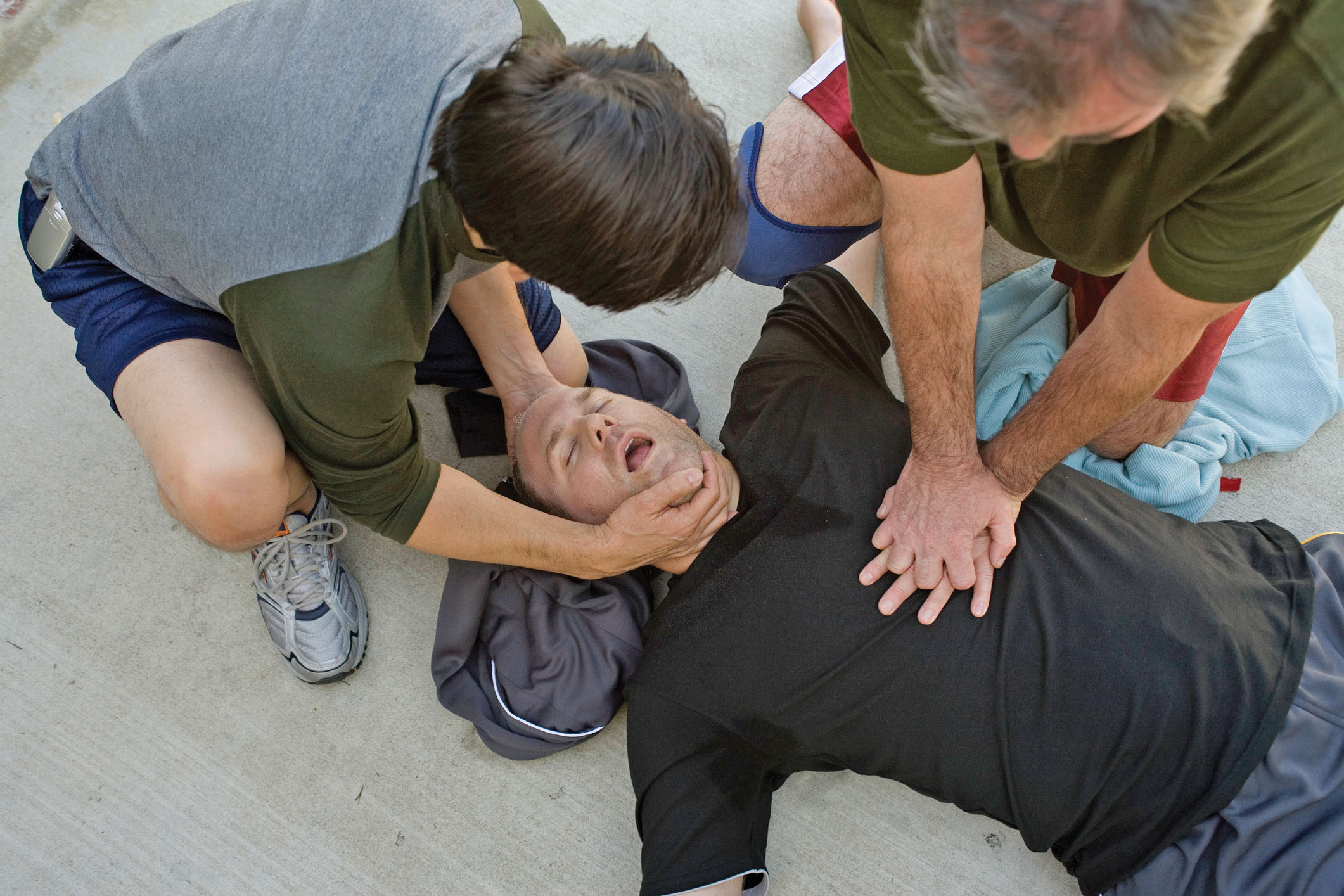Why don't more people know CPR?
Shorter, more accessible training and help from technology may encourage more people to learn and administer this lifesaving technique.
- Reviewed by Deepak L. Bhatt, M.D., M.P.H, Former Editor in Chief, Harvard Heart Letter

Hands-only cardiopulmonary resuscitation (CPR) can double a person's odds of surviving cardiac arrest — when the heart suddenly stops beating, causing a person to collapse and stop breathing. Yet fewer than half of people who experience cardiac arrest outside of a hospital receive CPR from someone nearby.
A recent scientific statement from the American Heart Association (AHA) explored the reasons underlying this situation, which include lack of access to training and other barriers. Although 65% of people in the United States say they've received CPR training at some point in their lives, only 18% of people are up to date on their training.
"Traditional CPR certification takes time and requires traveling to attend in-person classes," says Dr. Eric Goralnick, associate professor of emergency medicine at Harvard-affiliated Brigham and Women's Hospital. You can now do some of the training online, taking the classes whenever it works for your schedule. "But we need to make it even easier and meet people where they are," he says.
Shorter training?
Just over 75% of young adults who did a single, 20-minute CPR training session — either face-to-face or with virtual reality — said they'd be willing to perform CPR on a stranger when asked six months after the training, according to a study published May 2, 2022, by JAMA Network Open. The training took place in tandem with a large music festival in the Netherlands. One in six of the study participants went on to take a formal CPR class, and two-thirds said they told at least one family member or friend about the importance of CPR. Note, however, that about four in five out-of-hospital cardiac arrests happen at home — which means the life you potentially save with CPR is more likely to be a loved one or someone you know rather than a stranger.
Other barriers
Aside from a lack of training, another potential barrier to performing CPR is not recognizing cardiac arrest symptoms. Cardiac arrest has two key features:
A sudden loss of responsiveness. The person doesn't react if you loudly say, "Are you okay?" and firmly shake their shoulders.
No normal breathing. Look for the rise and fall of their chest, or put your face close to their nose and mouth to listen for breath. Labored, irregular breathing that sounds like snorting or gasping, known as agonal breathing, is not uncommon. But it doesn't provide adequate oxygen to the brain.
Although earlier guidelines advised people to check for a pulse, that's no longer recommended. If the person is unresponsive, fast action is more important. First, call 911 or tell someone nearby to do so, then start CPR. During a crisis, it's hard to think straight, but the basic instructions are simple: push hard and fast in the middle of the person's chest.
Common mistakes
Incorrect hand placement is one possible error. Place the heel of one hand on the center of the person's chest, right over the breastbone, between the nipples. "Many people put their hands over the person's stomach instead of their heart," says Dr. Goralnick. Place the heel of the other hand on top of the first hand and lace your fingers together.
Position your shoulders directly above your hands and push down, keeping your arms straight. Compressions that are too shallow are another common problem; use your body weight to compress the chest at least two inches.
But perhaps the most frequent mistake is giving compressions that are either too slow or too fast (the target is between 100 and 120 per minute). New York–Presbyterian Hospital created a list of songs with similar beats; see the playlist at www.nyp.org/cpr.
There's no substitute for the hands-on practice of an in-person class to give you a sense of the correct pressure and rate of compressions. But even being familiar with the basics of CPR is better than nothing; see this one-minute video from the AHA at www.heart.org/HandsOnlyCPR.
Many 911 operators are trained to provide verbal cues for CPR, so if you reach a trained operator, put your phone on speaker. He or she will help you administer the compressions at the correct rate. Using a video livestream on a smartphone to provide even more assistance to people giving CPR is another promising technology that's currently being studied.
Image: © Jupiterimages/Getty Images
About the Author

Julie Corliss, Executive Editor, Harvard Heart Letter
About the Reviewer

Deepak L. Bhatt, M.D., M.P.H, Former Editor in Chief, Harvard Heart Letter
Disclaimer:
As a service to our readers, Harvard Health Publishing provides access to our library of archived content. Please note the date of last review or update on all articles.
No content on this site, regardless of date, should ever be used as a substitute for direct medical advice from your doctor or other qualified clinician.
















